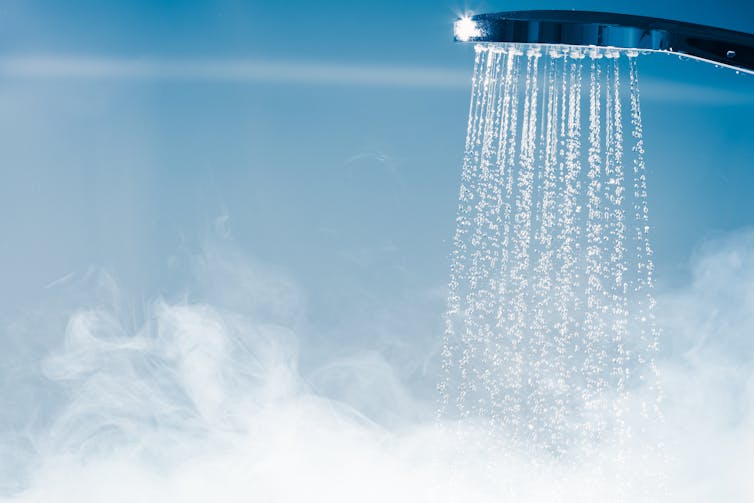The water main break that’s impacted Calgary, and the voluntary water use reductions that have followed, has been a wake-up call for many cities and Canadians across the country.
While water shortages in Canada are nothing new, the scale of the shortages in such a populated area of southern Canada is unprecedented and an important reminder of just how much we depend on having healthy water flowing from the tap.
Most Calgarians are still being asked to reduce their water use by at least 25 per cent. But a few days after the water main break, the city signalled that water use was starting to creep back up, raising concerns that water may run dry.
Across Canada, there is a general misconception about the amount of water we use. Recent reports have shown that Canadians use five times more water than they think — with a real water footprint of around 329 litres per day.
Canada is one of the biggest water users among peer nations in the Organization for Economic Cooperation and Development, ranking sixth out of 34 nations in total water usage, and second in per-capita water use.
With increased awareness of our reliance on water, many Canadians may be asking themselves how much water they use and how they can reduce their overall water use. With the continued threat of drought in many parts of the country and continued threats to water supply, there are simple ways in which we, as individuals, can use water more sustainably.
In the kitchen
The biggest water sink in the kitchen are faucets where most people have a tendency to do a cold or hot “flush” at the taps when washing hands or dishes. A hot flush is when you turn on the tap until it gets to your desired temperature.
While energy efficient guidelines limit faucets flow rates to 6.8 litres per minute, even a few minutes can consume a tremendous amount of safe drinking water. At the tap, consider adding a bucket in the sink to catch any unused water before it goes down the drain and reusing it for watering plants, hand-washing and rinsing dishes or for cleaning. To further save water, ensure you are using water-efficient dishwashers and running the dishwasher when it’s full on an eco or short cycle.
Additionally, if possible, try to upgrade your laundry to more efficient machines that use less water, and only run full loads of laundry on low-water cycles to minimize wastage.
In the bathroom
Our bathrooms are important places to reduce water use. In fact, it’s been shown that Canadians spend more than 50 per cent of our water in bathrooms.
Make sure faucets aren’t leaking and ensure toilet leaks are fixed right away. A simple fix is the addition of low-flow faucets, taps and toilets. Activities that consume the most water in bathrooms are baths, showers, brushing teeth and washing. Turn off the tap while brushing and consider a shower timer that can help keep showers under five minutes — playing a song in the background with a five-minute run time can be an easy way to know when to get out.
Turn off the shower while using soap or shampoo, and consider installing aerators on taps that can help give you higher pressure while using less water. Finally, avoid flushing the toilet after every use and remember the old adage “if it’s yellow, let it mellow. If it’s brown, flush it down!”

Outdoors
One of the most difficult changes needed in our relationship with water is outside the home as Canadians are often found watering lawns, washing cars and running through sprinklers.
Choose drought-resistant plants that are acclimatized to your local environment and are appropriate to where you live, choosing Indigenous plant species whenever possible.
Water plants and grass early in the morning or late at night to minimize evaporation and ensure that more water makes its way to the roots of the plants. Rain barrels are a simple way to collect water to be used for watering your plants, but you can even just use a bucket if you don’t have the capacity to invest in a larger rain collection system.
During times of water restrictions, the first thing to do is eliminate any and all reliance on outdoor water use. Washing your cars can be done more efficiently at a car wash that uses recycled water than at home. However, avoiding washing your car is the best way to go – wait for rainfall and let nature do the work for you.
Stay aware
Lastly, monitor your use since most Canadians. As Toronto has shown, cities can support residents by making water-use data available in real-time to residents. If your area does not provide this service, then consider petitioning your local government and utilities to pressure them to do so.
Read more: Humans are depleting groundwater worldwide, but there are ways to replenish it
Time yourself in the shower and count the seconds you have taps on. For families, turn shower time into a game to use the least amount of water possible and get the whole family involved in water consumption reduction.
It may also help to remind yourself that access to (relatively cheap) clean and safe drinking water is a rare luxury that billions of people around the world — and many right here in Canada — still do not have equal access to. While such gross inequalities persist, it is both pragmatically sensible and ethically imperative that we all do our best to use our planet’s water responsibly.
These simple techniques can help you to be more aware of your water use and can start to create a more sustainable relationship with water, something that we know we cannot live without.

